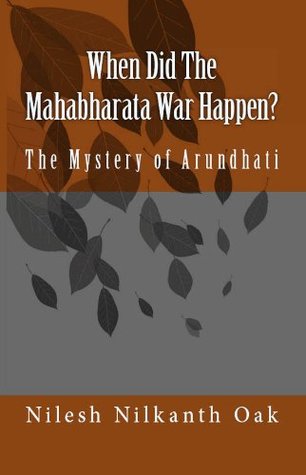When Did The Mahabharata War Happen? : The Mystery of Arundhati by Nilesh Nilkanth Oak - Review by Abhishek Desikan
It’s not often that you read a book outside of academia, which provides you a wealth of information and value, while building your curiosity. Nilesh Nilkanth Oak has done just that, with his rigorous and scientific method of approach in ascertaining the date and time period of the Mahabharata war.
The author, like many previous Mahabharata researchers, has taken the astronomical references provided within the Mahabharata text itself, to determine this. The book reads like a research paper, focusing on various aspects - his approach and methodology, assumptions, corroboration of star and planetary movements obtained through software simulations, with the actual scriptures, dissecting various other proposals, conducting falsifiability tests, and fitting a timeline which does not ignore or explain away any of the references.
It becomes clear very early on that this is an extremely tedious process and requires expertise in various fields. The author does his best to give us a primer on different astronomy basics, timelines and translations of all the references he has used. Even without his conclusions and assertions, the book stands out as an excellent reference to the events which happened during the war.
The crux of the book, as the title suggests, is “The Mystery of Arundathi”, which is the motion of star Arundathi ahead of Vasistha, something which wasn’t explained by any other researchers so far. The author, by good fortune, diligence and with the help of technology, has proven this occurrence did indeed happen, thus giving him an upper and lower bound on the time period of the war, from which he built his case.
As I read the book, I had the nagging feeling that the date proposed by the author, while extremely accurate in terms of corroborating references within the text, goes against almost all of traditional scholarship in terms of civilizational development of humans. The author does address this at the end of the book, as a reason to explore our traditional methods of archaeological studies. However, that explanation seemed a bit unsatisfactory to me.
It was fascinating to read about the extent of detail recorded before, during and after these events, by ancient astronomers. No doubt, it has piqued my interest to learn and explore the Mahabharata further. And I feel, as stated by the author, his success lies in piquing that interest among the readers of this book.

Originally published here.